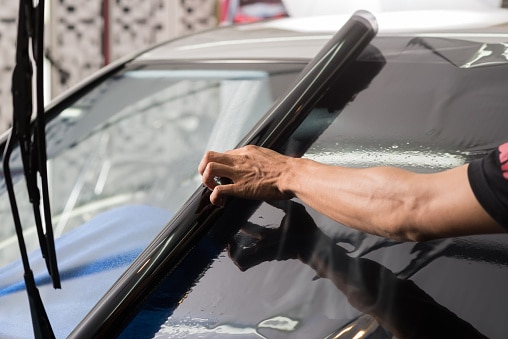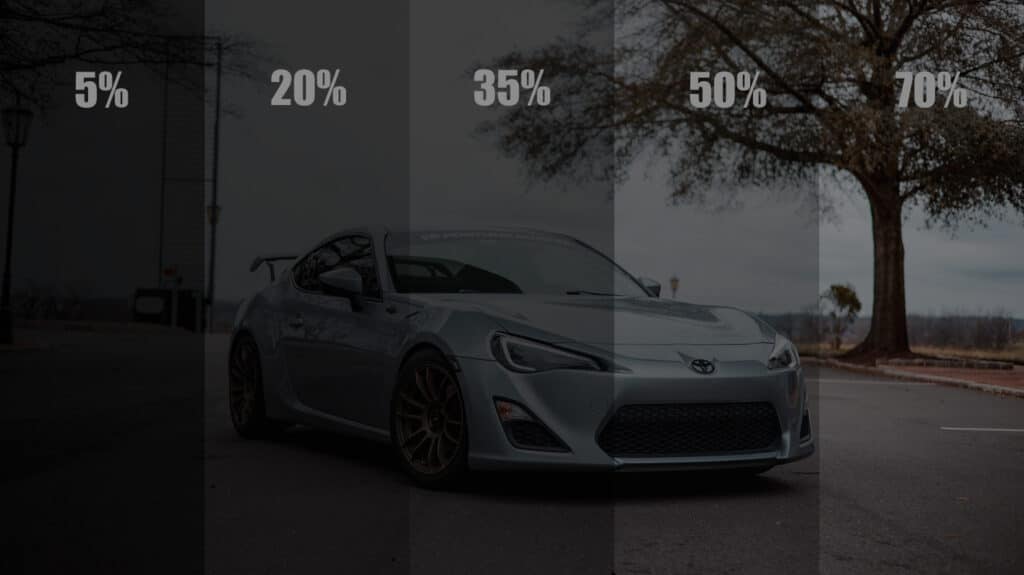If you want to get your car windows tinted in Nevada, you’re going to want to be aware of the tinting laws in your state before going ahead with the upgrade.
Window tints add style and privacy, and do an excellent job at cooling the interior down on hot and sunny days.
However, the use of tint films is regulated because of the amount of privacy they afford, and also because they can hamper your vision if they’re too dark. The latter is dangerous for both yourself and others around you.
In the United States, every state has its own set of tinting laws for different vehicles. Most of these laws are quite lenient.
In this article, you will find all the necessary details about the tinting laws in Nevada to help you make the right tint choice for your car.
Is Window Tint Legal in Nevada?

Tinting laws in Nevada were enforced in 1993. While it is legal to tint car windows in this state, there are specific rules and instructions that you need to follow.
These regulations vary slightly depending on the vehicle in question, and they also vary depending on which window you want to install the tint on.
It is important to stay informed about current laws as these can change over time. Though the tint laws in the state are flexible to a certain extent, failing to follow them can result in you having to pay fines.
Below you will find information on the required tint darkness and reflection levels for passenger and multi-purpose vehicles in Nevada.
Darkest Legal Tint in Nevada

VLT or visual light transmission is a unit of measurement that indicates the amount of light that can pass through your tinted windows. It is measured in percentages.
Lower VLT% means darker tints and less transparency. Higher VLT% means lighter windows and more transparency. The rules of permitted percentages of VLT vary for each window.

The darkest legal tint allowed in Nevada and Las Vegas is as follows:
Windshield: Non-reflective tint that must not cross the AS-1 line.
Driver-side windows: 35% VLT.
Passenger-side windows: No limitations on the level of darkness.
Rear window: No limitations on the level of darkness.
Acceptable Tint Reflection
In addition to obstructing light, window tints also reflect light on their surface. This reduces glare and heat absorption.
While tint darkness is a measure of how much light is allowed through the window, tint reflection indicates how reflective the film is.
Some states allow a certain amount of reflectivity, but in the state of Nevada, you cannot use reflective tints whatsoever.
Other Tint Rules You Need To Know

Nevada takes tint rules seriously. In addition to maintaining the level and type of window tint, some other rules must be followed.
- Side mirrors: If the rear window is obstructed with a tint, it is a must for vehicles to have dual side mirrors.
- Colored tint: Except for amber and red tint, all other colored tints are allowed in the state.
- Tint variance: A 7% tint variation is allowed. For instance, if your tint tests to 28% VLT, there will be no penalty.
- Window tint certification: Manufacturers must have tint certification to sell the film.
- Certified sticker: The state does not require vehicles to have a certified sticker to identify legality, type, or level of tint.
- Medical exemptions: There are medical exemptions for certain health conditions. Individuals with certifications from proper authorities are allowed to get a special tint. The exemption allows up to 20% VLT.
- Fine for violations: The owner may face a fine of over $100 for violating the state’s tinting laws.
State of Nevada Info

Located in the western region of the country, Nevada is the 36th state in the United States. It is the seventh largest in terms of land area.
Though it is mostly an arid state, the mountains are dotted with about 15% of forests.
The state’s economy rides on mining and the tourism industry. Legalized gambling in the state is a big tourist attraction. It ranks fourth in gold production around the world.
The metropolitan city of Las Vegas is the state’s economic center and its biggest city. Of the 16 counties, Clark County is Nevada’s most populous county.
Population: 2,758,931
Capital: Carson City
Registered vehicles: 1,361,671
Total lane miles: 100,805
Number of highways: 6
Tint law references: State Legislature
Medical exemption: Department of Public Safety

